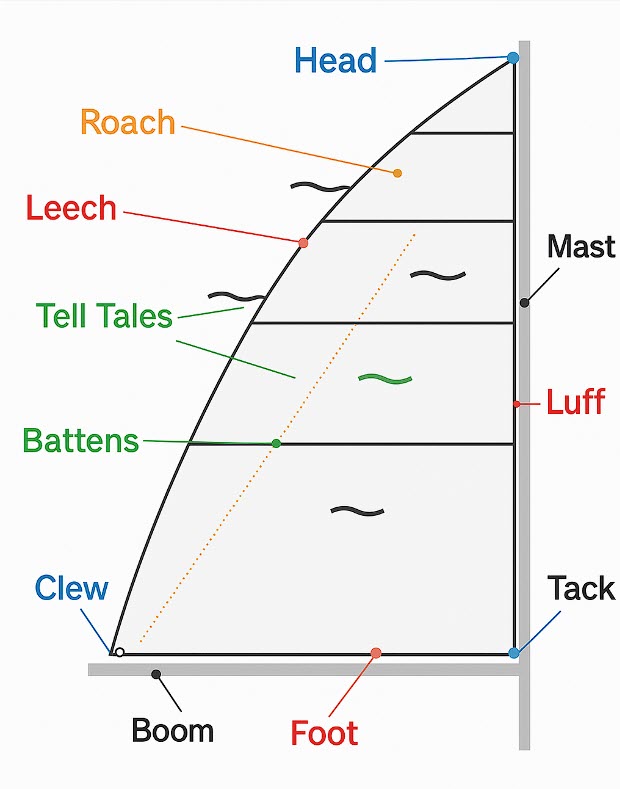Clew: The Aft, Lower Corner of the Sail, Where the Foot and Leech Meet
Definition: The clew is the aft, lower corner of a sail, where the foot (bottom edge) and the leech (trailing edge) intersect. It is one of the three corners of a triangular sail (the others being the tack and head) and is typically the point where the sheets (control lines) are attached to adjust the angle and tension of the sail.
Understanding the Clew:
In sailing, the clew is a critical point of control for both mainsails and headsails. The clew determines the shape and trim of the sail, affecting how efficiently it catches the wind. For the mainsail, the clew is attached to the boom, and its tension is adjusted using the outhaul. For headsails like the jib or genoa, the clew is where the jib sheets are attached, allowing the sail to be trimmed for different wind angles.
How the Clew Works:
Attachment Point:
The clew is where the sail is most actively controlled. On a mainsail, the outhaul connects to the clew and adjusts the tension along the foot, affecting the sail's draft (depth). On a jib or genoa, the sheets attached to the clew are used to trim the sail, adjusting its angle to the wind and controlling the shape of the leech.
Sail Shape Control:
The clew’s position and the tension applied to it play a major role in shaping the sail. Tightening the outhaul or sheets will flatten the sail, reducing its draft and making it more efficient in strong winds. Easing the tension allows the sail to become fuller, increasing power in lighter winds.
Applications in Sailing:
Upwind Sailing:
When sailing upwind, the clew’s position is adjusted to optimize sail shape, reducing drag and allowing the boat to point closer to the wind. The clew is typically pulled in tight to flatten the sail.
Downwind Sailing:
When sailing downwind, the clew is eased out to allow the sail to billow, increasing the sail area exposed to the wind and maximizing speed.
Sail Trim:
Proper trimming of the sail through adjustments at the clew is essential for efficient sailing. Whether using the outhaul on the mainsail or the sheets on a headsail, controlling the clew is key to achieving the desired sail shape.
Examples of Usage:
"Tighten the outhaul at the clew to flatten the mainsail as we sail upwind."
"Ease the jib sheet at the clew to allow the sail to fill more as we bear off."
"Make sure the clew is secure and properly tensioned before we head out."
Visual Representation:
Image Description: Diagram of a sailboat showing the clew of the mainsail, highlighting its location at the aft, lower corner where the foot and leech meet.
Importance in Sailing:
The clew is a vital control point on a sail, affecting the overall shape and efficiency of the sail. Proper management of the clew, through tools like the outhaul or jib sheets, ensures that the sail is trimmed correctly for different wind conditions. Understanding the role of the clew and how to adjust it effectively is crucial for optimizing sail performance and achieving the best possible sailing experience.
Related Terms:
Outhaul:
A line used to adjust the tension along the foot of the sail, directly affecting the clew’s position.
Foot:
The bottom edge of the sail, running from the tack to the clew.
Leech:
The trailing edge of the sail, running from the head to the clew.
Tack:
The forward, lower corner of the sail, opposite the clew.
Conclusion: The clew is the aft, lower corner of the sail, where the foot and leech meet, and it plays a critical role in controlling the sail’s shape and performance. Properly adjusting the clew through the outhaul or sheets allows sailors to optimize the sail’s efficiency, ensuring better speed, balance, and control. Mastering the adjustments at the clew is essential for effective sail trim and overall sailing performance.

